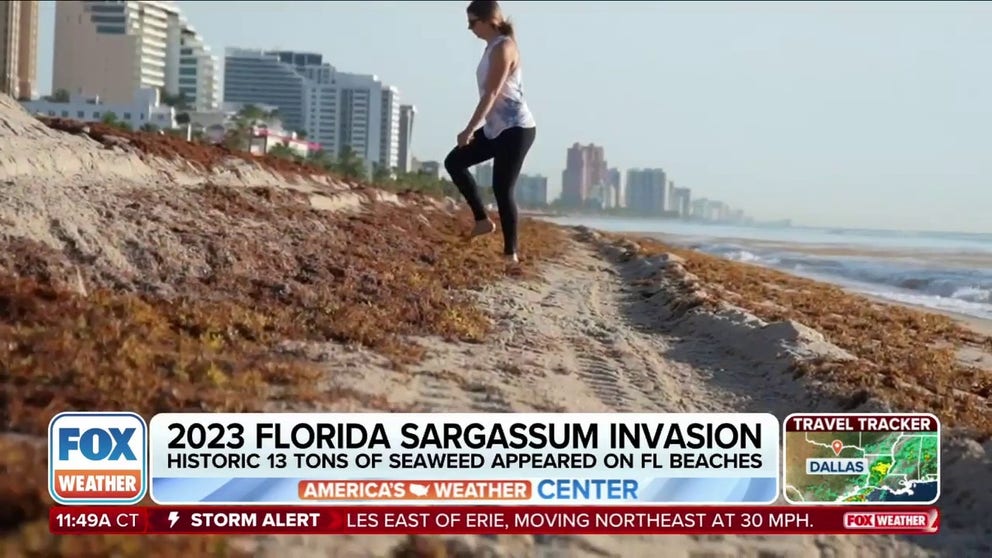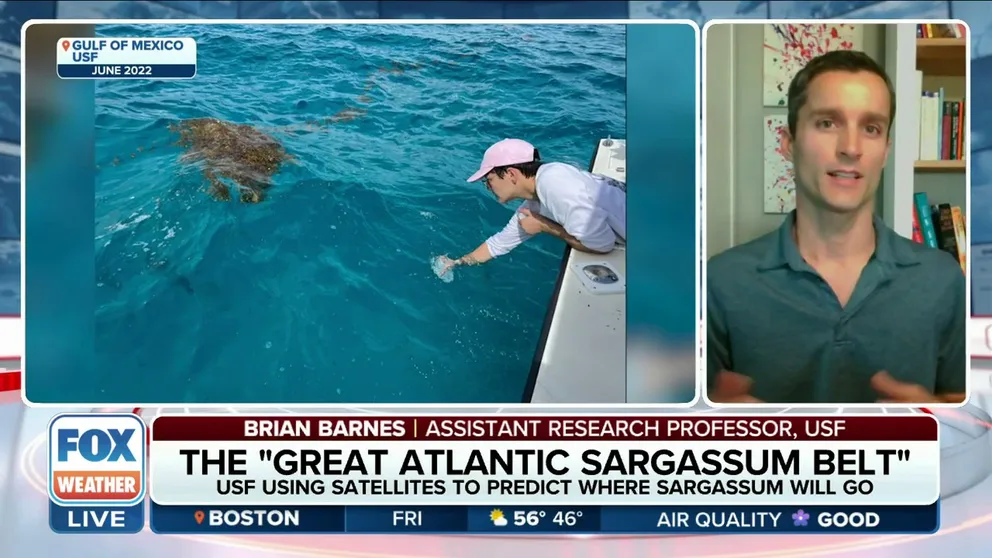Florida beaches spared worst of smelly sargassum invasion – so far
The Sunshine State saw a record-breaking invasion of sargassum during the spring and summer months last year, but the amount of seaweed reported so far in 2024 has been much lower.
Will smelly sargassum seaweed make a comeback along Florida beaches?
We’re well into the summer season and people continue to flock to beaches to catch some rays and take a dip in the ocean. One thing people aren’t missing, however, is the smelly sargassum seaweed that has littered beaches across the U.S., including Florida, which saw a record-breaking invasion of the sargassum last year. FOX Weather Correspondent Brandy Campbell was in Fort Lauderdale on Wednesday and spoke to some beachgoers about their concerns.
FORT LAUDERDALE, Fla. – There are only a few precious summer weekends left, and people are hopeful that the smelly sargassum seaweed that coated beaches along the Florida coast last year will stay away.
The Sunshine State saw a record-breaking invasion of sargassum during the spring and summer months last year, but the amount of seaweed reported so far in 2024 has been much lower.
WILL THE ANNUAL SEAWEED INVASION THREATEN FLORIDA BEACHES IN 2024?
University of South Florida developing sargassum forecasting system
Dr. Brian Barnes of the University of South Florida joined FOX Weather on Friday to explain how they're developing a system to track sargassum and attempt to predict where it's going next. (Video from November 2023)
Sargassum is usually spotted during the spring and summer in the tropical Atlantic Ocean, the Caribbean Sea and the Gulf of Mexico.
It’s a habitat for marine life as it floats in the open ocean, but after it washes ashore, people say it can get bothersome and smells very bad.
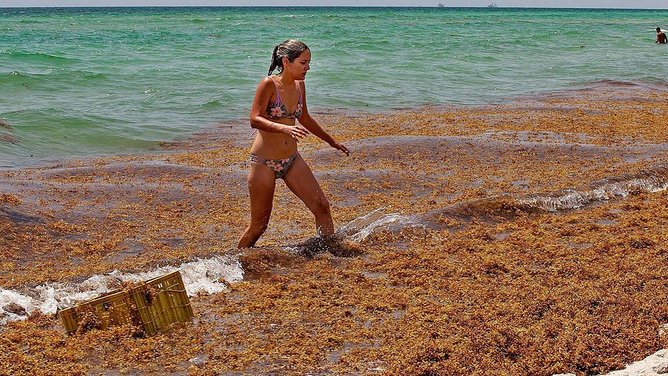
FILE - Monica Madrigal find her way out of the ocean through a thick raft of Sargassum seaweed that washed up on the seashore by the 71st Street area in Miami Beach Tuesday July 28, 2020. (Pedro Portal/Miami Herald/Tribune News Service via Getty Images)
(Getty Images)
The Sunshine State has been spared the worst of it – so far.
"We actually predicted this three months ago," said University of South Florida Oceanography Professor Chuamin Hu. "We said, this year Florida may see just a little amount or nothing."
A LOOK AT A PHENOMENON THAT COULD DERAIL AN ACTIVE HURRICANE SEASON
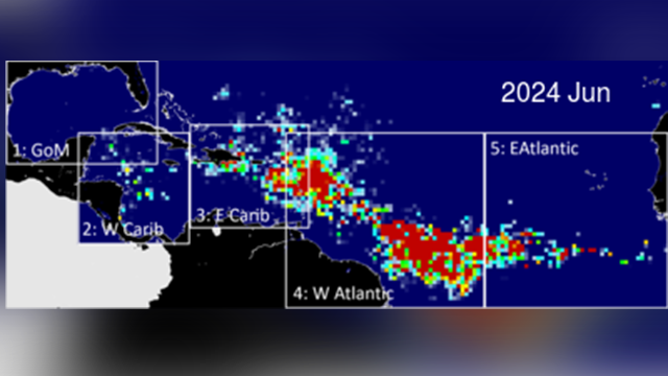
Extent of Sargassum across the Atlantic in June 2024.
(USF)
The superintendent of park operations in Fort Lauderdale told FOX Weather Correspondent Brandy Campbell that crews still need to clear beaches of sargassum this year, but records show they’ve picked up about a third of what was cleared in 2023.
So, what makes this year so different?
Earlier this year, researchers started to notice a lot of sargassum in the tropical Atlantic and eastern Caribbean, but it didn’t continue to develop too fast, per usual.
FLORIDA RESEARCHERS DEVELOPING SYSTEM TO FORECAST WHERE SMELLY SARGASSUM SEAWEED IS HEADED

FILE - A beachgoer walks through sargassum that washed ashore on May 18, 2023 in Key West, Florida. (Photo by Joe Raedle/Getty Images)
(Getty Images)
Researchers are also taking a look at ocean currents.
"By ocean currents, if you don’t have a strong ocean current, then you don’t have the momentum," Hu said. "So, that’s the only explanation as to why they grow not as fast as in past years, there could be multiple factors – ocean temperatures, nutrient availability."
DOWNLOAD THE FREE FOX WEATHER APP
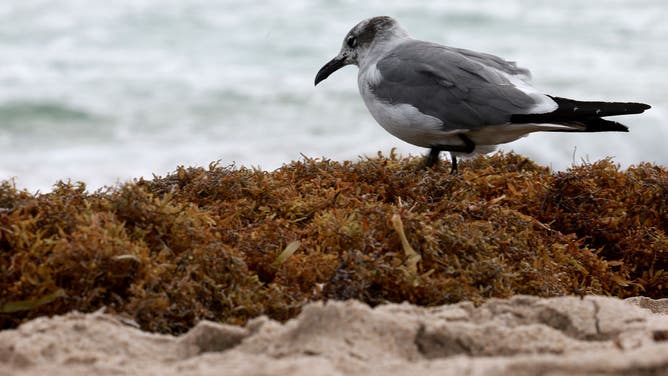
FILE - A seagull walks over seaweed that washed ashore on March 16, 2023 in Fort Lauderdale, Florida.
(Joe Raedle / Getty Images)
The latest outlook indicated Florida and the Florida Keys will continue to see batches of sargassum. The southern portions of the Bahamas will see drifting mats of the smelly seaweed.
Barbados and the Lesser Antilles, Puerto Rico and the Dominican Republic are among some of the places seeing the worst of the sargassum seaweed so far in 2024.
